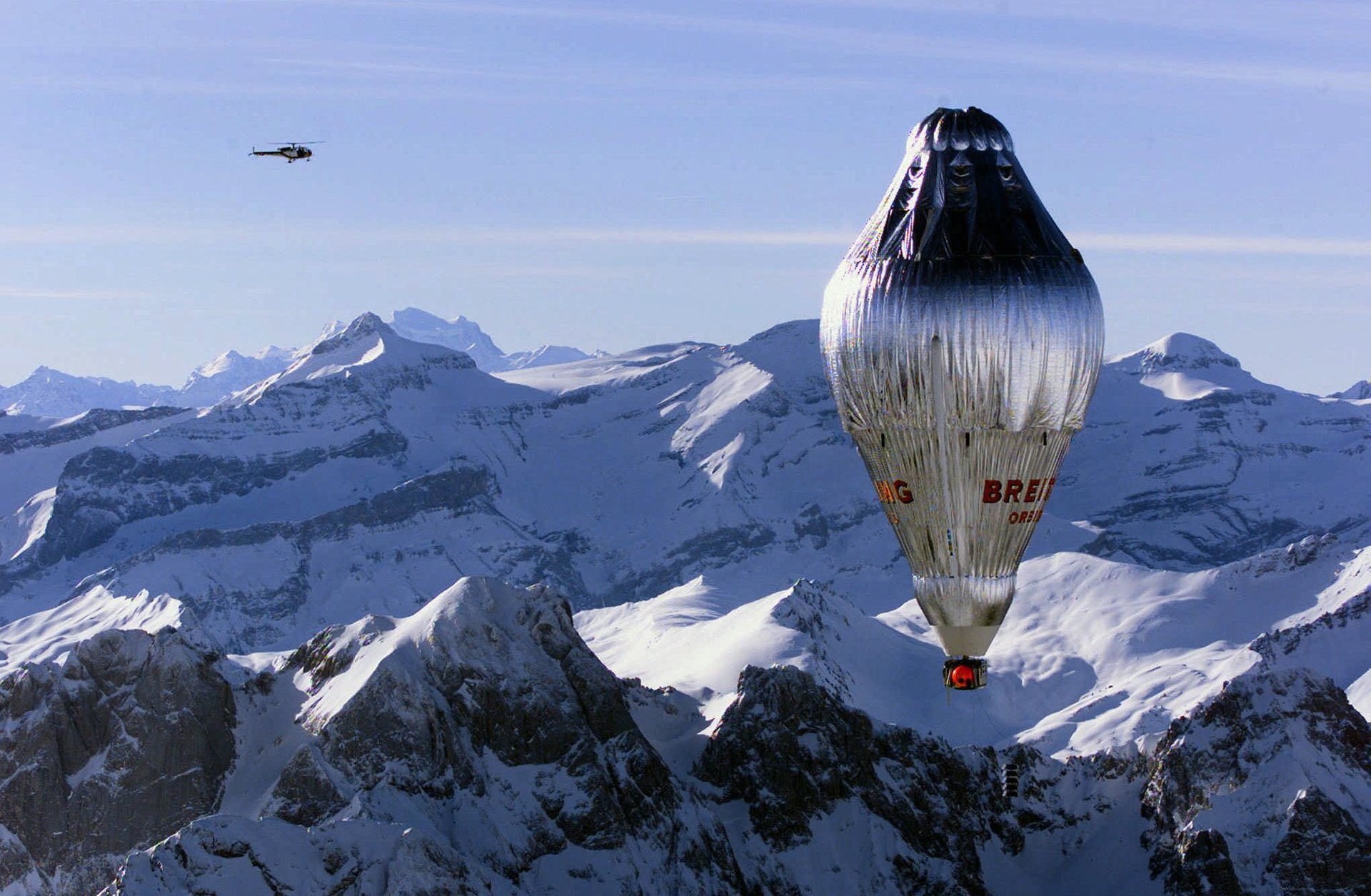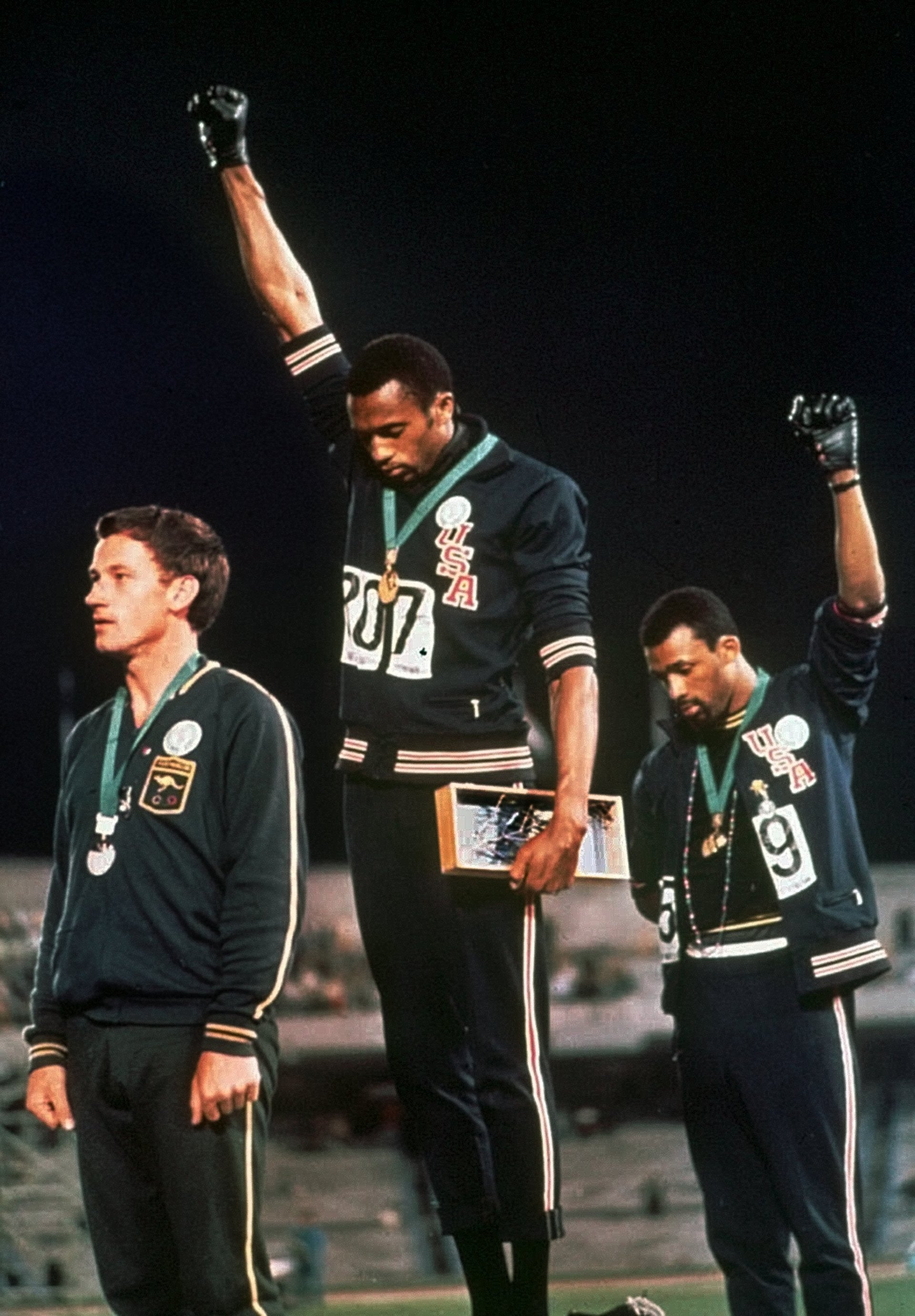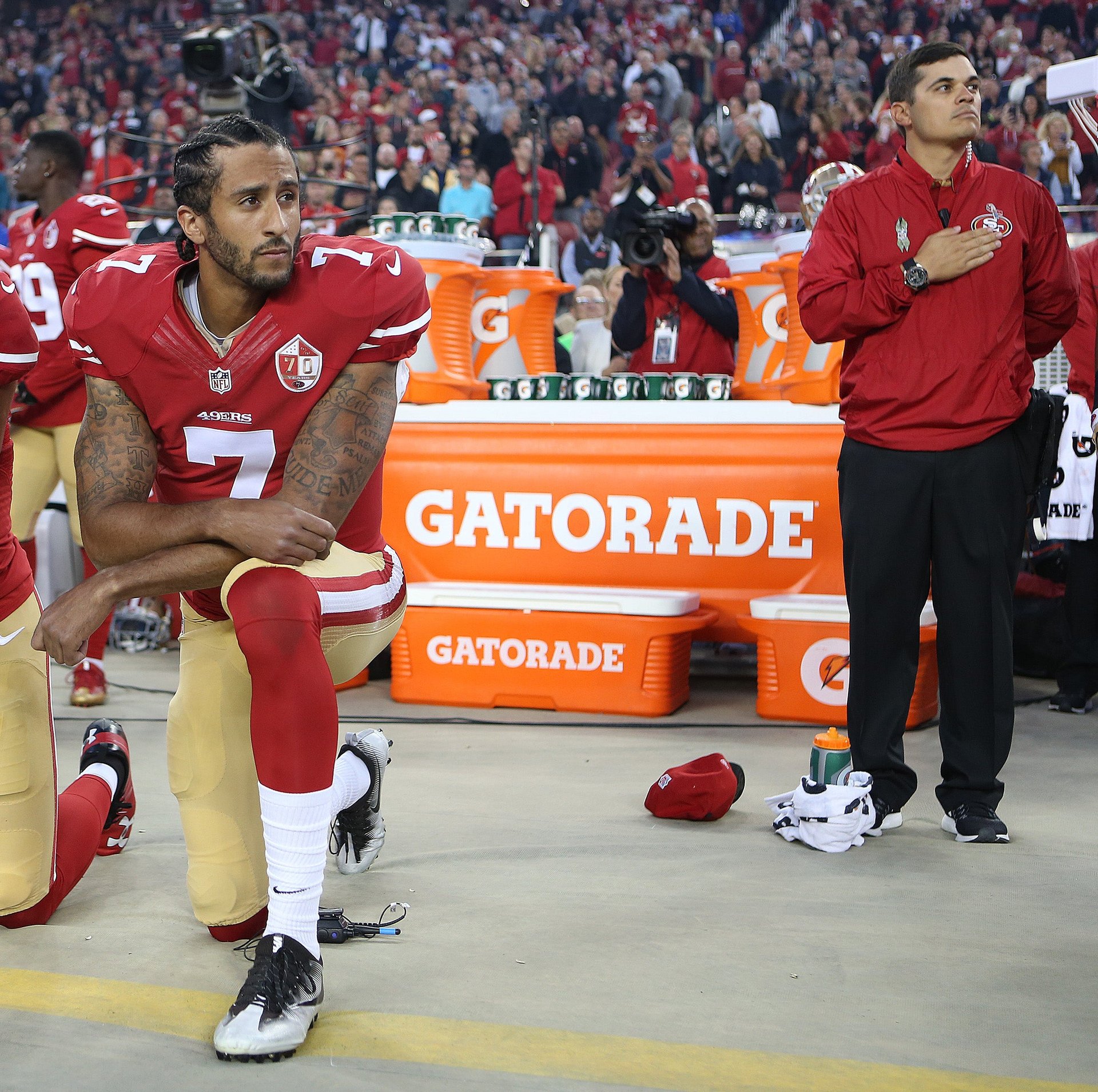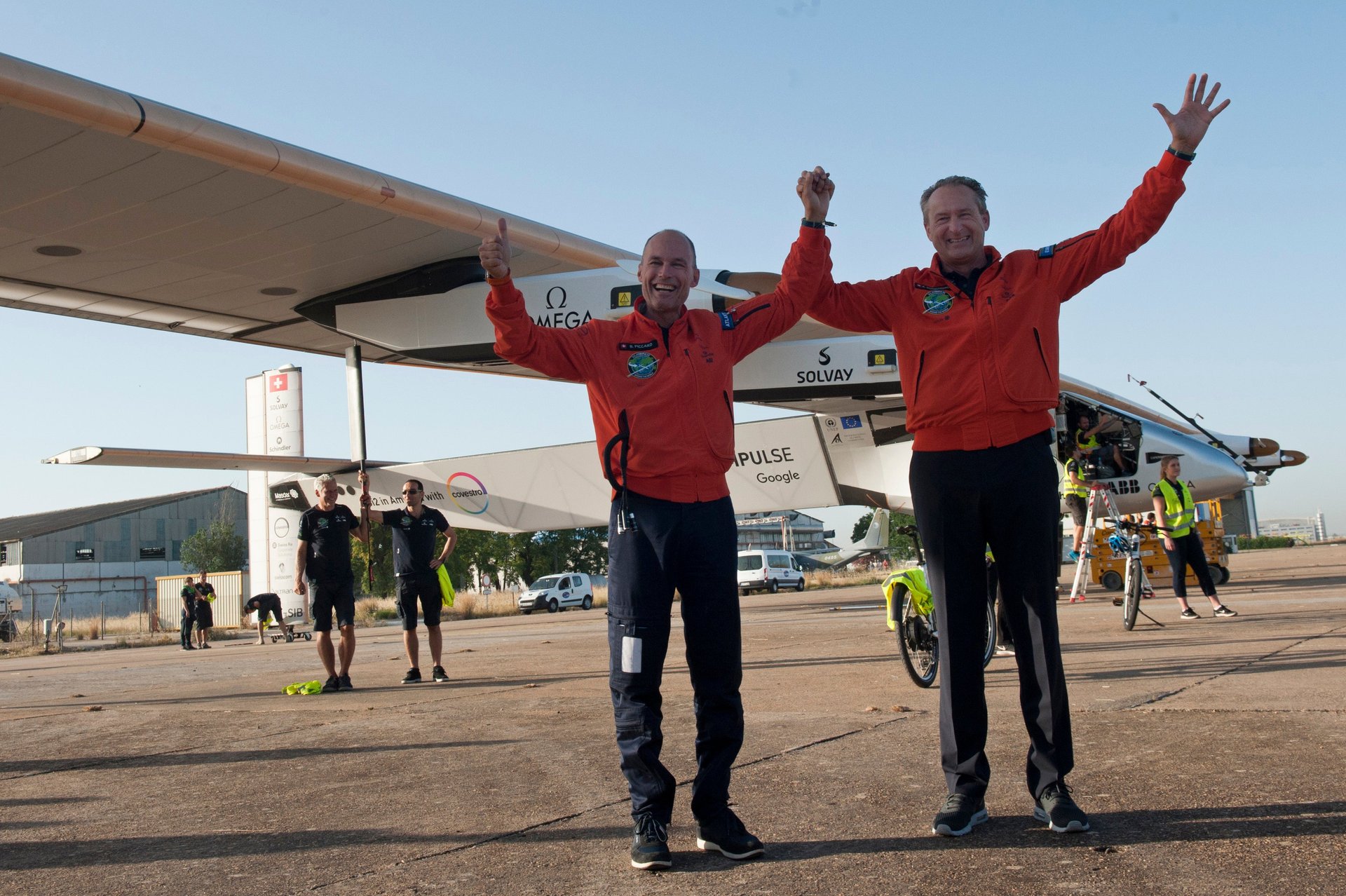The secret to making people care about climate change is surprisingly simple
Climate change is getting old. We’ve grown tired of hearing that last year was the fourth-warmest year ever. We turn off if someone says there’s more CO2 in the atmosphere now than there was 3 million years ago. And if we hear that Miami is going to be underwater by 2100 one more time, we’re just going to drop our phones into the watery void of our rapidly rising sea levels.


Climate change is getting old. We’ve grown tired of hearing that last year was the fourth-warmest year ever. We turn off if someone says there’s more CO2 in the atmosphere now than there was 3 million years ago. And if we hear that Miami is going to be underwater by 2100 one more time, we’re just going to drop our phones into the watery void of our rapidly rising sea levels.
But what if instead of awareness, we focused on action? Instead of further defining the problem, we concentrate on what can fix it? It’s just like that classic literary maxim: Show, don’t tell.
Instead of just talking about solutions, Bertrand Piccard had created them. He’s the first person to both circumnavigate the globe in a hot-air balloon and in a solar-powered airplane of his own making. In an era where our guilt over the environmental effects of plane travel have lead to words like the Swedish flygskam and the German flugscham being coined—”flight shaming” in English—Piccard endeavors to get people thinking about alternate methods of travel and resource expenditure in a more sustainable way.
Piccard comes from a lineage of intrepid explorers who didn’t let gravity get in their way. His grandfather Auguste Picard was a scientist who invented a helium-powered balloon that took him over 50,000 feet into the sky back in 1931. That made him the first Earthling to enter the stratosphere, as well as the first person to see the curvature of the Earth. Not to be outdone, his son Jacques decided to go the other way—underwater, closer to the center of the planet. Along with US submarine lieutenant Don Walsh, he was the first to reach the bottom of the Mariana Trench, which is the deepest part of the ocean.
So with heights climbed and depths explored, Bertrand took the final direction he could: going around the Earth. His initial circumnavigation was the non-stop mission of the Breitling Orbiter 3 ballon in 1999—a 19-day-long trip he took with aeronaut Brian Jones. A few years later, he started planning for what at the time seemed like a preposterous task: building a solar-powered plane that could take him around the world with no fuel at all.

The project was called Solar Impulse. The first sun-powered plane was built in 2007, but it wouldn’t be until 2016 that he and co-founder André Borschberg would successfully tag-team an entire trip around the globe—in daylight and darkness, in good weather and in bad, and with not a drop of gas.
Why did he do it? To raise awareness for renewable energy and clean technologies. Without a crazy concept to point toward, Piccard would have just been another person frustrated by our governments’ lack of urgency or action, shaking his fist at the sky. Instead, he went there, and showed all the naysayers that the impossible was possible if you build the right team and apply the right amount of imagination.
At the Global Exploration Summit in Lisbon last month, Quartz sat down with Piccard to talk about how to turn awareness into action. The key? Explain the problem—and then show the solution.
This interview has been lightly edited and condensed for clarity.
Quartz: What is the connection between exploration and education?
Bertrand Piccard: If you go to Moon, it’s the most fantastic thing you can experience. But if you come back and don’t have a message—if you don’t say something useful—why do you go to the Moon?
There are so many causes that need celebrities and spokespersons: poverty, gender equity, education, health, human rights, protection of the environment. All these [explorers] have huge power, incredible power, and everyone in the media listens to them. They should say something useful, because otherwise it’s a lost opportunity.
So they have a responsibility as a steward of the Earth?
Explorers have a huge credibility when they speak, because they have done something. If they open their mouths, people are listening. But it’s not easy to do it well.

You remember the American athletes in Mexico in 1968 who got the Olympic medals? When they got them, they put their heads down and put their fists in the air because they were fighting for equality between the black and the white. They had their medals withdrawn! They lost their medals. Today, people don’t dare to do things like that. And it’s a pity.
There are so many bad things in this world we need to address, and we need spokespeople to refuse these types of things. We refuse this hate, this violence. The world is in trouble because there is not enough spirituality, not enough compassion, not enough respect. If the people who can say that don’t say it, how are we going to improve the world? How can we if they don’t open their mouthes? When I was a child, I was always shocked by the meaningless and emptiness of the speeches celebrities gave. I always promised that if I had a microphone in front of my mouth, it would be to say something useful.
But what about Colin Kaepernick taking a knee?
That’s the guy that Nike took as an example for their campaign, right?

Yes, studies came out that showed that people were generally against Nike standing by him, but the brand actually gained popularity in the black populace.
It was very courageous of Nike to do that.
They’re the new celebrities people listen to—it used to be astronauts like Neil Armstrong. But we don’t treat astronauts nowadays with the same reverence that we used to.
The really spectacular things happened with the Apollo and Gemini missions. They were about exploration. The ISS [International Space Station] is scientific research, it’s not exploration. So it’s different. The guys going up there are scientists.
Who are the new explorers in that case?
All the people who do something special and have a real message to say about it. For me, these are the people I respect.
How do you get the public to care about whatever that message is?

When I am thinking about the messages I’m sending with Solar Impulse about renewable energies, I try to put forward useful messages. In the beginning it was difficult. People would say, “Why do you speak about that? You’re just flying an airplane.” And I say, “Yeah, it’s not an airplane–it’s a message.” It’s about having a podium to speak about these things, and the airplane is just a way to get people interested in the topic.
Have you seen real changes in how Solar Impulse has affected policy?
Now all the airplane constructors who were laughing at me are now all working on electric-powered airplanes! They don’t laugh any more. The CEO of Airbus told me, “It’s amazing, all my engineers told me don’t work with this guy—he’ll never succeed. And now that you’ve succeeded, they’re all telling me to work on electric airplanes.”
But will these ideas be able to scale? How will you get the aerospace industry on board? Michele Obama tried to get sugary drinks taken out of schools, but she couldn’t get past the sugar lobbyists—they were too strong. How will you get past the fuel lobbies? They don’t want people like you to succeed.
By working in alliance with them rather than fighting them.
How do you do that?
To show them that it’s in their own best interest to diversify. They have technologies, they have money, they have people, and there is an amount of shares they could take with renewables. We are starting to see some companies work more on energy efficiency for customers.
For people who don’t have the ability to influence policy, what tips do you have for making a difference?
Talk about it. Do what you can on your side. If you know journalists, speak to the journalists. If you live alone in your house, save energy, don’t waste your air-con, insulate your house, take an electric car, use LED lamps. All these types of things save so much energy. The problem with the world today is the waste of energy and the lack of respect for natural resources. Technologies exist today to use much less energy and much less natural resources to produce much less waste. All this exists—we just have to use it.
How do you get people to break their habits?
People don’t want to get out of their habits, and that’s why you either have to give them a personal interest to do it—that they’ll earn money or save money—or you need a better governance and legal framework that pushes people in a good direction. There are regulations for health, hygiene, education, taxes, and security—everything, except for the environment. All of these politicians who say “We have to carbon neutral by 2050” will wait until 2049 to do something about it. It’s ridiculous.
What’s the best way to get people to change their minds and take action?
I would never say, “I wanted to fly around the world, so I built this plane, and I flew around the world. I succeeded, and I’m happy to have done the job correctly.” I’m never going to say that. It’s edited, it’s stupid, it’s ridiculous! I want to say why I did it. People have to demonstrate the problem, and show the solution. We can’t only speak about the problem—if you only say the world is in trouble, who is going to do something about it? The problem is too big. So you need to spend one minute to say we’re in trouble, and then point to how many solutions exist—how profitable they are and how many jobs they create. That way people leave the room with hope, with action, and with enthusiasm to do something.